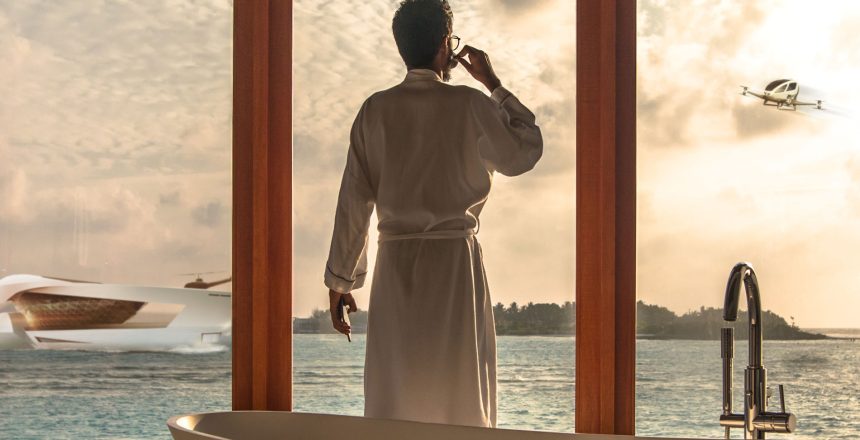It is often said that one person’s ‘tasteful hall of opulent mirrors’ is another’s ‘vulgar waste of an idiot’s money’ – usefully illustrating the challenge of trying to define a sector that defies definition.

For a long time, our perception of luxury was all about the supercar, the designer handbag, the perfect timepiece and the expensive holiday. But rising affluence and connectivity across large areas of the planet have shifted the boundaries of what luxury means.
At its core, luxury has always been about status. Once a physical manifestation, status in the future will become more and more intangible, particularly as the list of things we need to own outstrips the space we have to own them in.
Before we make any predictions, let’s just consider a couple of demographic factors that will be impacting the luxury sector of the future.
Growing old disgracefully
It is said that the first 150-year-old human has already been born and that long, active lives beyond 100 will become normal. So forget youth culture; it will be the 55+ generation that will drive the trends and be able to afford them.
No more rich, white supermodels
Mass movement of people around the globe will create new ethnicities and our definition of beauty will be much broader. Increasing possibilities of body modification and VR technology will broaden these boundaries further. No one really knows what the beauty standard will be in 2044, but it’s unlikely to be a tall, skinny, white girl.
Here are five ‘things’ we expect to see in 2044:
- Shopping 3.0
High-end fashion brands will create ‘temples’, where both human and robot shop assistants will focus their skills around pleasure rather than selling. The shop window will be the new homepage. Customers will order in-store through a biometric implant and find their shopping waiting for them by the time they get home. Brands will deploy a mix of both physical and VR web-based stores to ensure a smooth, personalised and entirely hassle-free experience for consumers. - Luxury customers go fully international
As we become even more mobile, the typical luxury customer is going to be travelling, a lot. A house in Shanghai, an office in Rio, a flat in London. They will have been everywhere and done it all. They will be able to buy anything from anywhere. International luxury customers will expect restaurants, culture, exceptionally clean air, lighting effects to bring happiness on a foggy day, and to be dropped off by a self-driving car. - Fashion that makes the tea
Clothing that merges with biotechnology will become a common thread (excuse the pun) in the luxury sector. Nanotechnology will allow manufacturers to embed function into articles of clothing that will act as a digital skin. This type of body ‘OS’ will connect to the wider internet, so that in an internet of things your T-shirt would be aptly named (think about it) should you be inclined. - Grow your own perfect clothing
By 2044, it is likely that our clothing will be adaptable and updateable on any particular day. Luxury customers will have a 3D printer at home and a range of materials at hand. They may also own a biofabricator, which could make garments that look and feel like leather and silk, but are actually made from mushrooms and bacteria. At least the vegans will be happy. - Escape to the country
The wealthy don’t like living in cities anymore. It’s noisy, dangerous, polluted and standardised. They have moved to the urban countryside, where they can experience the pleasures of fresh air, artisan produce and an interconnected home they can work from. These will be their base camps, with IT to connect them to the rest of the world.
So what will be the big challenges for luxury marketers of the future?
- Ensuring timeless quality
The future luxury consumer will seek excellence both concerning brand behaviour and product. Sustainability for this group will be paramount and marketers will need to develop long-lived iconic products that can also be inherited by our children. - Karma has no menu
As luxury becomes increasingly intangible, so brands will be judged by their behaviour. They will be expected to take responsibility and make a difference. Marketers must ensure their brands are transparent and socially conscious. If you thought people were judgemental now, just wait. - Carpe diem
Time is the one thing that humans have in common. It is also one of the things that money can’t really buy, which is why it has become a luxury. Marketers will need to find ways to hand consumers control of their own time. - Creating non-Googleable experiences
With so much information accessible to so many people, the concept of luxury, to some, will mean absolute exclusivity. Experiences will need to be designed for the person, with access denied to everyone else.
Ultimately, the overriding challenge for luxury marketers in the future will be to reconcile the paradox that is technology and tradition, ensuring that in a world travelling in a homogenous direction, distinction remains the soul of the sector.



